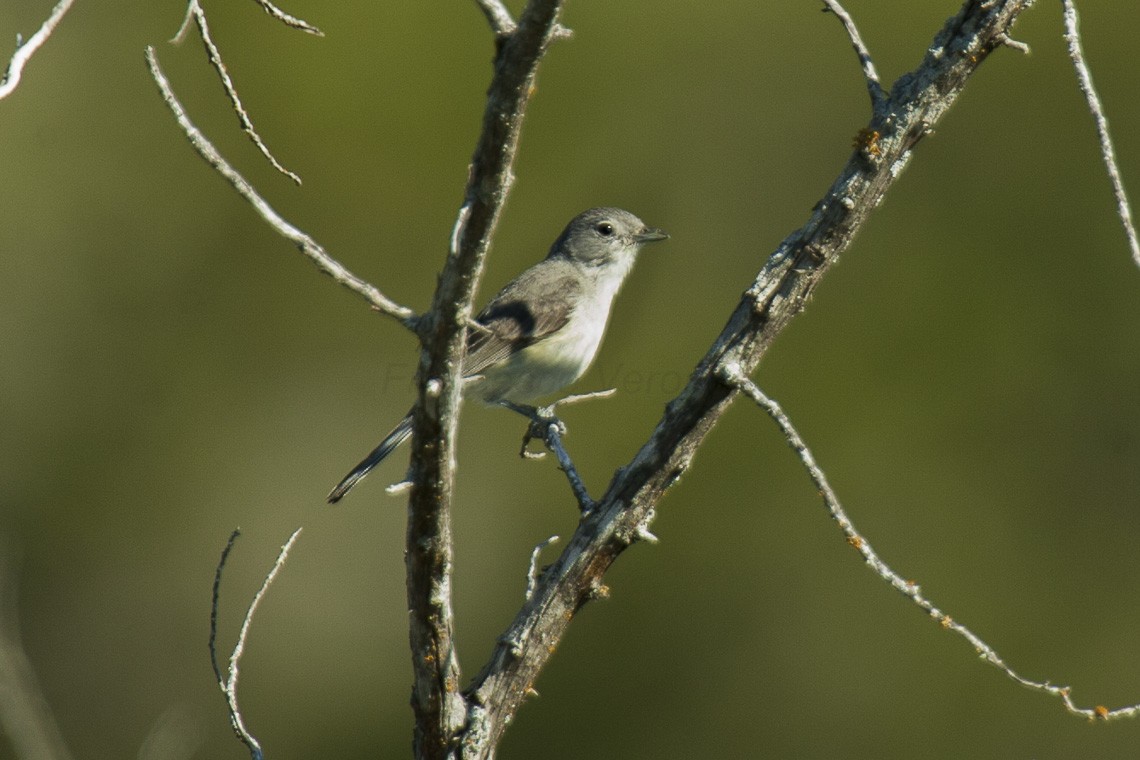Grey Vireo
A species of Vireos Scientific name : Vireo vicinior Genus : Vireos
Grey Vireo, A species of Vireos
Botanical name: Vireo vicinior
Genus: Vireos
Content
Description General Info
 Photo By Francesco Veronesi , used under CC-BY-SA-2.0 /Cropped and compressed from original
Photo By Francesco Veronesi , used under CC-BY-SA-2.0 /Cropped and compressed from original Description
The gray vireo is 14 cm (5 ⁄2 in) in length, gray above, and dull white below, with a single faint wing bar and an eye-ring. It has a short, thick bill. Sexes are similar. The sideways twitching of its tail is unique among vireos and is reminiscent of that of gnatcatchers. The song is hu-wee, chu-wee, che-weet, chee, ch-churr-weet, churr, schray. 
Size
13-15 cm (5-5.75 in)
Life Expectancy
6 years
Nest Placement
Shrub
Clutch Size
2 - 4 eggs
Feeding Habits
Grey Vireo's diet consists predominantly of insects, captured by gleaning on leaves and twigs within dense vegetation, typically under 12 feet. Foraging behavior varies seasonally, with higher foraging and more aerial insect capture in summer, and increased fruit intake, especially in southern regions, during winter. Grey Vireo uses branches to subdue larger insects before consumption.
Habitat
Grey Vireo thrive in arid to semi-arid ecosystems, such as brushy mountain slopes and diverse scrublands inclusive of pinyon pine-juniper, mesquite, and chaparral. These birds prefer areas with mixed vegetation that doesn't exceed 6 feet in height, up to altitudes of 7,800 feet. Habitats are chosen for their shrub and tree composition, which varies regionally, but commonly includes chamise, redshanks, oaks, junipers, and cacti.
Nest Behavior
During nest building, the female grey Vireo, guided by the male, selects the site and constructs the nest. They typically exhibit the usual avian patterns of incubation and feeding.
Nest Characteristics
Grey Vireo's nest is typically located in a fork of a small tree or shrub around 6 feet high. The cup nest is made of grasses, bark, and plant fiber, adorned with leaves and spider cocoons, measuring about 2.7 inches across and 2.3 inches tall, with an interior cup 1.9 inches across by 1.6 inches deep.
Dite type
Insectivorous
General Info
Feeding Habits
Bird food type
Bird Feeder Type

Small Hopper

Platform
Behavior
The grey Vireo, known for its early spring territorial songs, displays a unique conspicuity when perched atop trees—a divergence from its typically reclusive counterparts. Monogamous in nature, the grey Vireo engages in a distinct courtship, with males exhibiting a puffed plumage and females showcasing a wing vibration. Notably, pairs collaborate on nest selection and construction, with males contributing through a symbolic 'bachelor nest' and weaving motions. Their defense tactics against intruders include scolding calls and attacks. The size of their territories varies considerably. Parental duties, such as incubation and feeding, are shared. Post-fledging, these birds maintain family bonds while foraging, sometimes mingling in mixed-species groups, yet they adopt a solitary stance during migration and on wintering grounds, where they defend individual feeding areas.
Species Status
Not globally threatened.